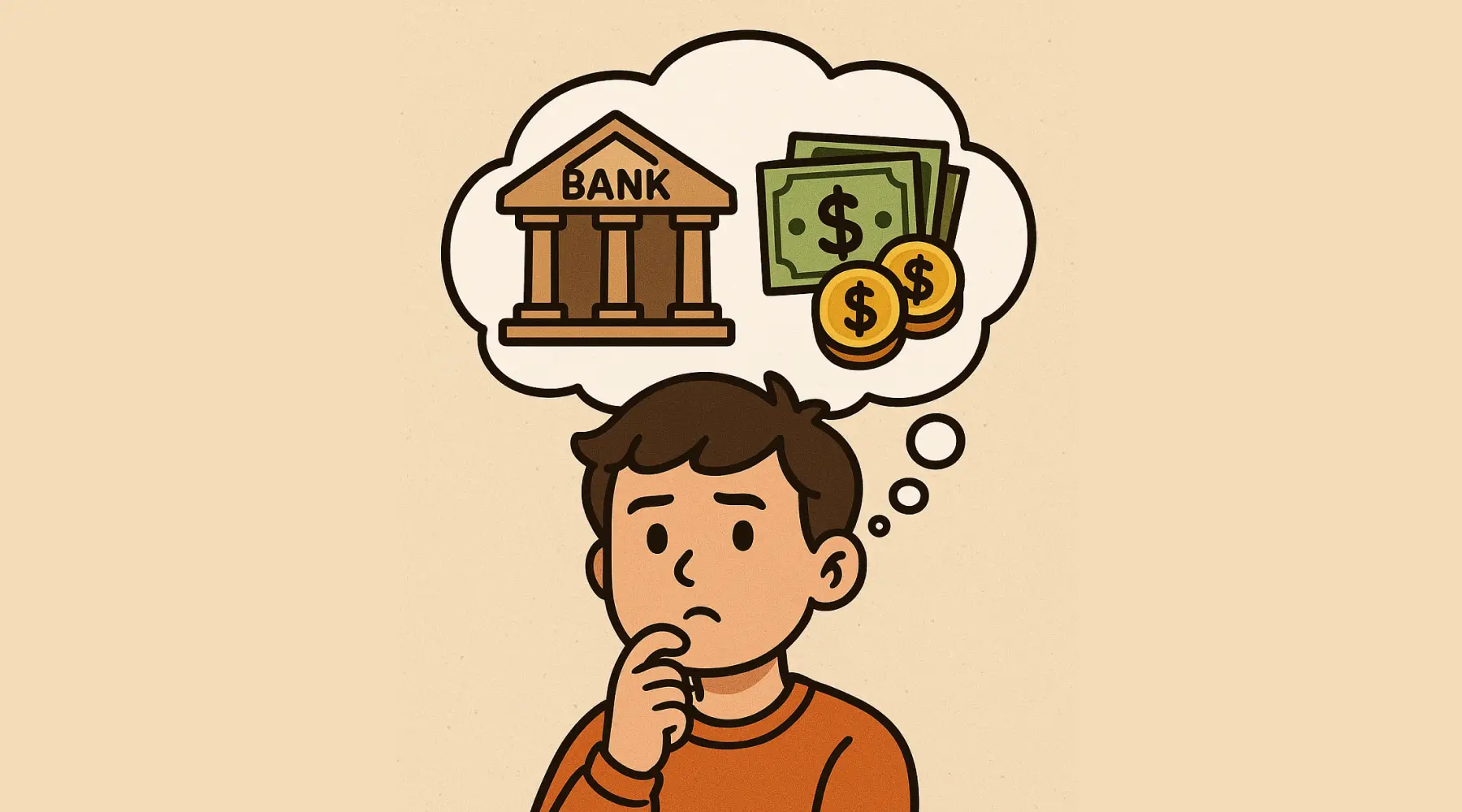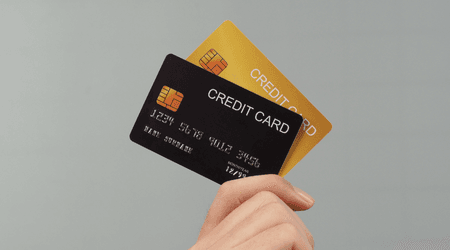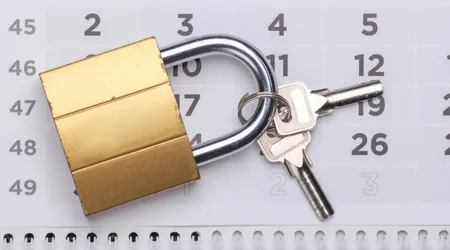- Debit card and typical checkwriting
- Unlimited deposits and withdrawals
- Most banks and credit unions offer these accounts
- Deposit insurance
7 Types of Bank Accounts: Compare Features, Fees and Perks
Checking, savings and CDs — oh my.


Don’t feel like reading? Watch this two-minute video to learn the basics of the common financial accounts that you can choose from.
Most people know what a checking and savings account is, but what if you want something with bells and whistles or just something entirely different from traditional?
Compare seven types of financial accounts that can help you organize your finances, grow your savings and spend your hard-earned dough.
The essential and dependable, and the common yet oh-so useful, checking accounts are one of those necessary accounts most people have. Banks designed these accounts for everyday spending, and you can deposit and withdraw as often as needed. You’ll get a debit card for spending, and you can write checks or use your card to make purchases and withdraw cash on the go.
But since they’re designed to pay bills and spend, most don’t earn interest. You can find interest-bearing checking accounts, but rates aren’t as competitive as savings accounts.
Just as you might think, a savings account is designed for saving. Banks want you to deposit money into their accounts, and in exchange, they pay you interest. Savings accounts earn interest on your deposited funds, and the amount you earn is expressed as a percentage. On average, financial institutions offer 0.38% on savings, but you can find much better rates with high-yield accounts.(1)
However, savings accounts don’t give you spending capabilities, but they are offered by just about all financial institutions in the US.
Need checking and savings? Check out SoFi's hybrid account
With SoFi Checking and Savings get paid up to two days early. Set up direct deposit to automatically get your paycheck up to two days early every time you get paid.
With a certificate of deposit (CD), you agree to lock your money away for a set period. In exchange, you get a fixed interest rate for the CD’s term. Most CD terms range from three months to 10 years. On average, CDs earn higher interest rates than savings accounts. If you want the most bang for your buck and you can afford to leave cash alone for a while, CDs can be a really great way to grow your savings.
The only catch is that you can’t withdraw your money before your CD matures without penalties, often around 90 to 180 days of earned interest.
A money market account (MMA) is sort of like a savings and checking account hybrid. You’ll get spending capabilities, such as a debit card or checks, but you’ll also earn interest on your balance. For the most part, they’re classified as savings accounts, but with the added perk of being able to spend if you need to.
On the downside, MMAs are typically limited to six withdrawals per month (similar to savings), and they may require deposits of $500 or more to get started.
There are several different types of retirement accounts, such as 401(k)s and Traditional and Roth IRAs. Depending on the account you use, you may gain access to tax breaks, employer matching and other perks to help you secure a nest egg for retirement.
Retirement accounts often have yearly contribution limits, and you may pay penalties if you need to access funds early — and keep taxes in mind. Contributions to traditional IRAs are tax-deductible, but when you withdraw that cash, that’s when your funds are taxed. On the other hand, Roth IRAs offer tax-free distributions in retirement, but contributions are taxed.
A brokerage account is an investment account designed to buy and sell investment products, including stocks, exchange-traded funds (ETFs), mutual funds and bonds. Brokerage accounts are typically offered by investment firms, which can then place trades on your behalf. Some full-service brokerage accounts also offer personalized service and financial advice through a financial advisor.
However, brokerage accounts often require an investment account to qualify, and you may have to deal with balance requirements and monthly fees.
With a cash management account (CMA), you can spend, save and invest in one fell swoop. CMAs have similar features to checking accounts and may come with an ATM card, a debit card and checkwriting capabilities. They also function as a savings account by offering competitive interest rates.
Brokerages are the ones that generally offer cash management accounts, so you may also be able to invest in securities using the same account. And on that same note, you may need a brokerage account to open a CMA.
Of course, the right account for you depends on your goals — and there’s a good chance you’ll have more than just one bank account.



Deposit accounts from insured institutions are federally protected up to $250,000. This coverage includes accounts like checking, savings, CDs and money market accounts. Investment accounts, however, are not covered under FDIC or NCUA insurance.
There are more than four types of bank accounts, but the four basic options are checking, savings, CDs and money market accounts. Checking is for spending, saving is for savings, CDs are for savings and money markets are designed for spending and saving. All four options come with federal insurance, but exact fees, requirements, rates and perks depend on the bank.
The most classic and historically “safe” option is the savings account. They’re low risk, have insurance, earn money on your deposit and have the only real downside of limiting withdrawals (at some banks).
As people gradually needed somewhere safe to store their money, banks created savings accounts. These accounts are also how banks earn deposits that they can then lend to other consumers.
For many people, their first bank account is a savings account, often set up by parents for their children. However, a checking account can be a great first bank account. They come with a debit card, are low risk and great places to store cash (you probably won’t earn interest at most banks, though).
Compare kids’ banking options if you’re looking for your kids’ first bank account.
SoFi Plus is a new membership option for SoFi customers that’s free with qualifying direct deposits and earns extra rewards and higher APYs.
SoFi and Wealthfront both have competitive high-yield savings accounts, but Wealthfront has a higher APY while SoFi has better banking options.
Both SoFi and Discover Bank are rewarding and free, but SoFi lets you invest online. The best bank for you will depend on what features are most important to you.
Wells Fargo is a Big Four bank, but SoFi’s free online checking and savings accounts boast competitive interest rates, savings round-ups and easy ATM access.
SoFi is better than Chase for savings and checking accounts, but Chase is the better pick for credit cards.
SoFi and Capital One are both good picks for different reasons. SoFi is best for everyday banking, but Capital One has more account options and branches.
Ally is best for its savings products, while SoFi is best for its convenient checking and savings hybrid account. See pros and cons here.
Marcus offers top savings options, but if you want a full-service bank, go with SoFi.
SoFi is better for earning stronger savings rewards, while Chime is better for credit-building. Compared head-to-head, SoFi wins.
Zynlo Bank offers online checking, savings and money market accounts with competitive APYs and no fees.
How do I get cash without my direct express card because I’m waiting on my replacement card in the mail.
Hi Amanda,
Thanks for getting in touch! To withdraw cash from your Direct Express card while you wait on your replacement card, you may visit any bank or credit union that displays the MasterCard® acceptance mark and get cash from a teller. Hope this helps and let me know if you have questions, I’m here to help!
Best,
Nikki
I would like to set up an account for my civic organization that requires two authorizations (digital preferred) for any withdrawal of $5000 or more. Can you please help me find a bank that will provide this service?
Hi Jeff,
Thanks for reaching out.
So far, we do not have an available comparison page for different bank accounts, but most major banks would allow you to open a bank account for your civic organization with two authorized signatories. I would suggest that you contact any of the banks near your office to confirm your application.
Meantime, you may like to read our guide on choosing a bank account that will work according to your needs.
Cheers,
May